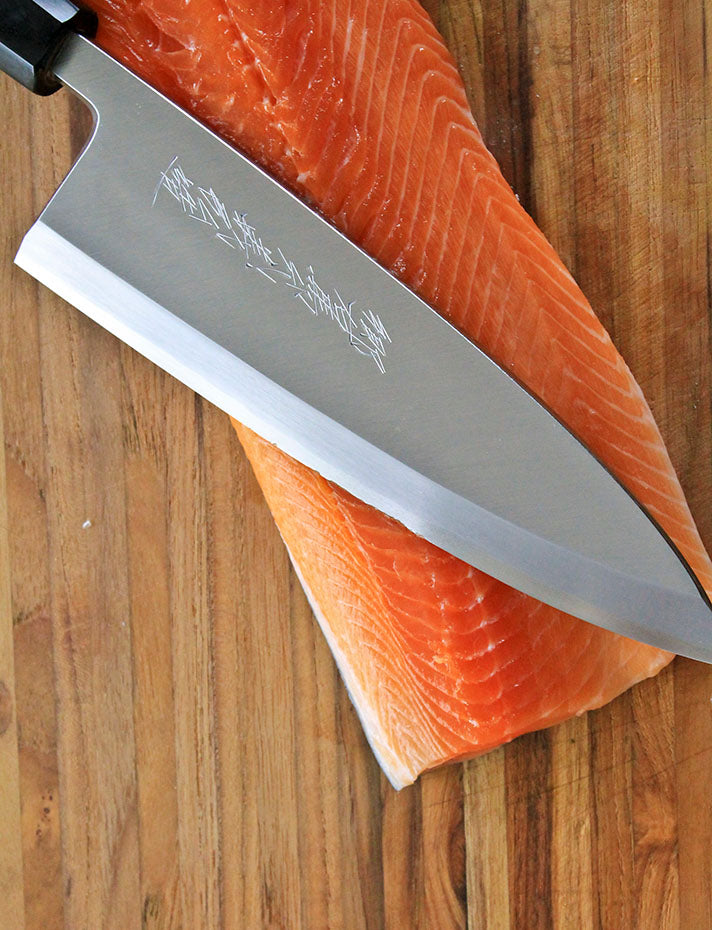
Shop Cutlery
Chef Curated Artisan Knives
Kitchen Knife Buyer's Guide
Our guided process will help you navigate the world of kitchen knives and choose the best tools for your culinary needs.
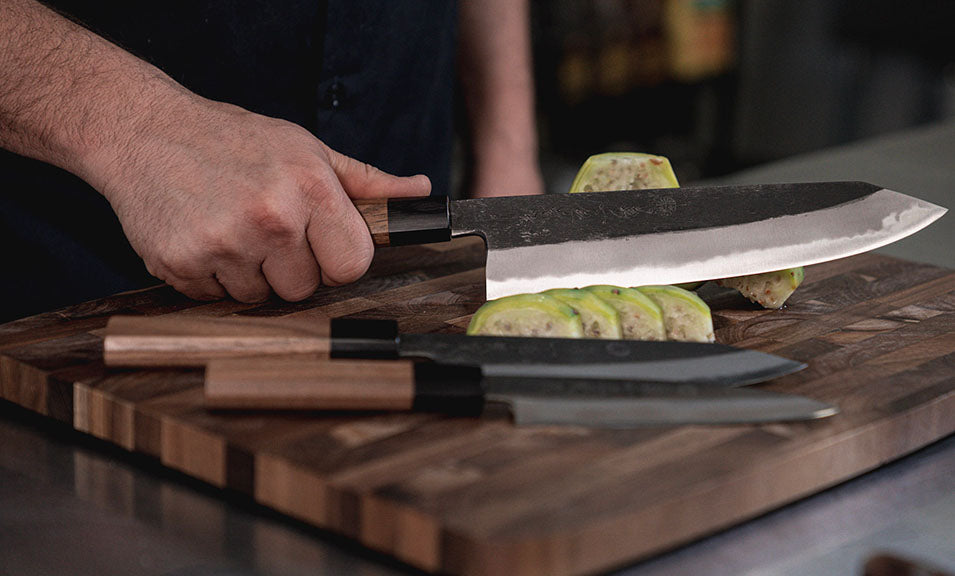
Stay Sharp!
Keep your favorite kitchen tools at their peak performance with our sharpening services and products.
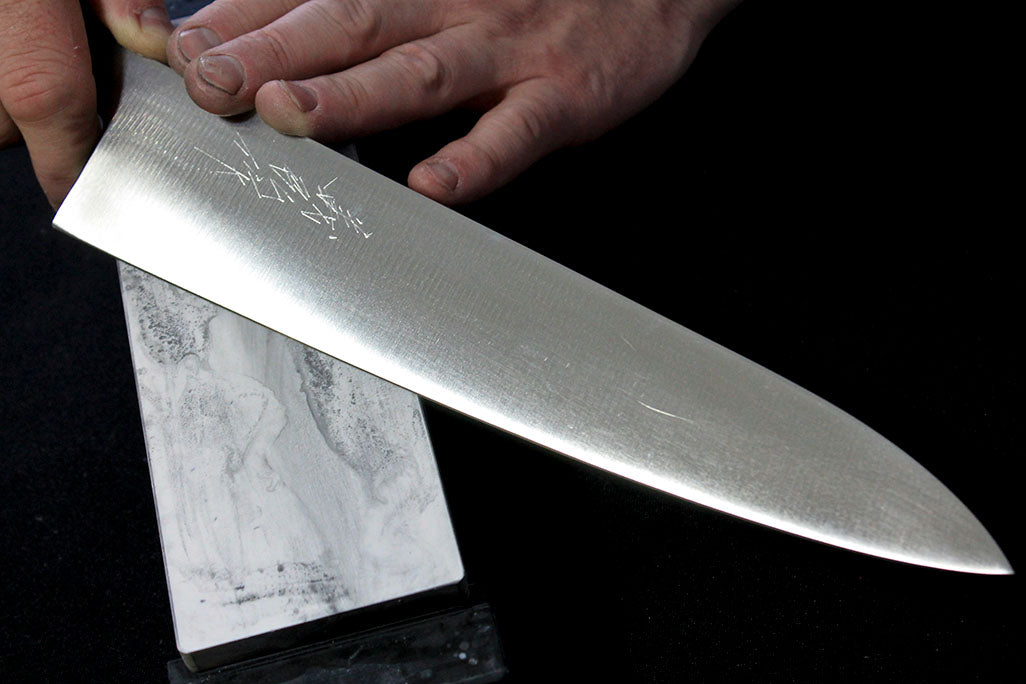
Gifts To Cherish For Generations
Gift a slice of excellence to the culinary explorer or aspiring chef in your life with a top-tier knife or kitchen tool, expertly crafted to enhance their kitchen adventures.
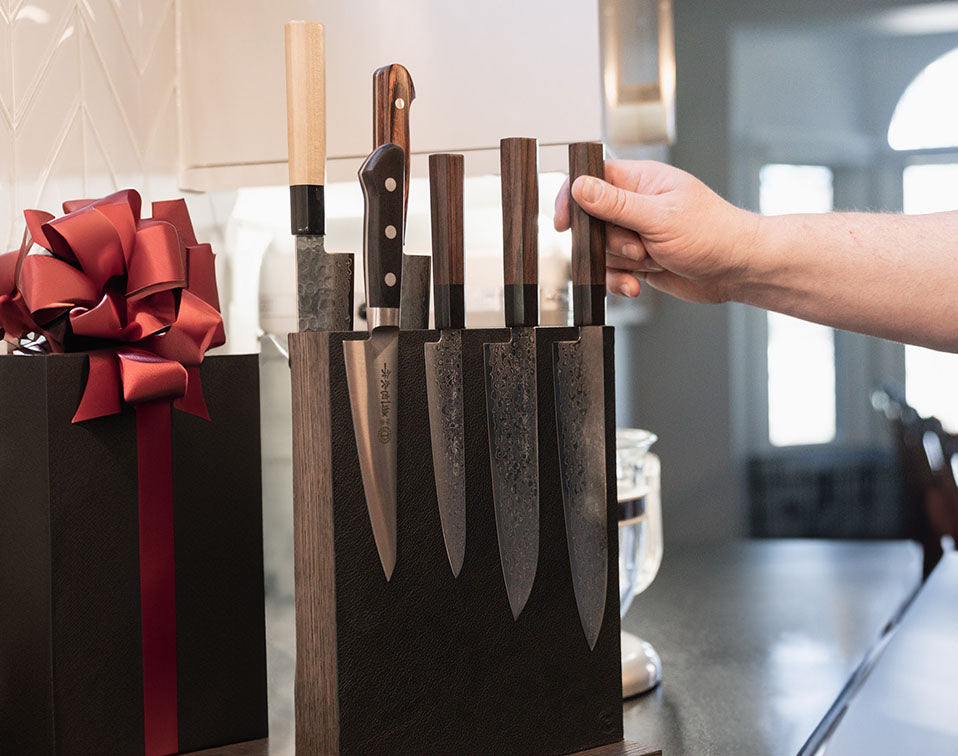

All About Knives
Learning Center
About Element Knife Company
CLICK HERE to learn more about our story and how Chef Elan found his way to curating the best cutlery in the world.
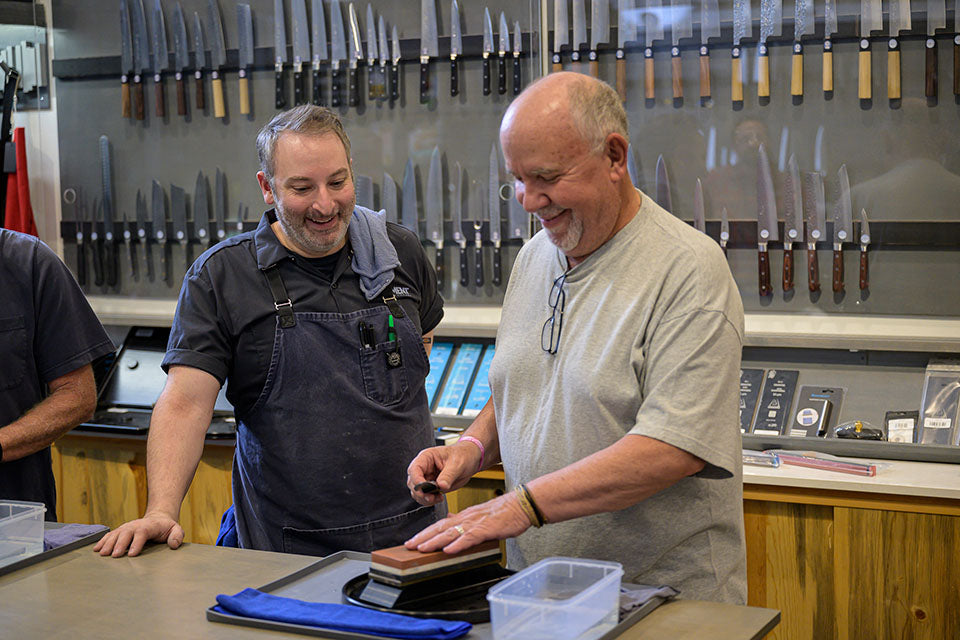

A Brief History of Japanese Kitchen Knife Making: From Swords to Culinary Masterpieces
Japanese kitchen knives have earned a reputation as some of the finest in the world, celebrated for their craftsmanship, sharpness, and durability. However, the art of Japanese knife making is deeply rooted in a rich history that goes beyond culinary applications. From the ancient art of swordsmithing to the evolution of specialized kitchen knives, the journey of Japanese knife making is a fascinating tale of craftsmanship and adaptation. In this blog, we will explore the captivating history of Japanese knife making, including the pivotal transition from swordsmithing to culinary knife production.
The Early Days: Sword Making and the Samurai Legacy
The origins of Japanese knife making trace back to ancient times, with swordsmithing playing a prominent role in the nation's history. The samurai warriors, renowned for their martial prowess and code of honor, wielded exceptional swords that were crafted with intricate attention to detail.

Japanese swordsmiths followed traditional methods, such as the Tamahagane process, which involved smelting iron sand and charcoal to produce high-quality steel. This steel was then carefully forged and repeatedly heated, folded, and hammered to create blades with extraordinary sharpness and resilience. These swords were not only lethal weapons but also revered as symbols of status and craftsmanship.
The Ban on Samurai Swords: A Turning Point
The Meiji Restoration of 1868 marked a significant turning point in Japanese history. With the rise of modernization, the samurai class lost its status and privileges, leading to the prohibition of carrying swords in public. The ban on samurai swords dealt a heavy blow to the traditional swordsmithing industry, leaving many skilled craftsmen at a crossroads.

As the demand for swords waned, these talented smiths had to adapt to survive. Many chose to transition their skills to create more practical and utilitarian tools, including agricultural tools, cutlery, and eventually kitchen knives.
The Evolution of Japanese Kitchen Knives
The transition from swordsmithing to kitchen knife making marked the beginning of the culinary knife revolution in Japan. With their expertise in steelwork and metallurgy, the former swordsmiths brought a level of craftsmanship to kitchen knives that was unparalleled.

Japanese kitchen knives started gaining recognition for their razor-sharp edges, exceptional cutting performance, and graceful designs. Each region of Japan developed its own knife-making style, leading to the emergence of various knife types, such as the yanagiba, deba, and usuba knives, each serving specific culinary purposes.

Famous Japanese Knife Makers and Companies
Over the years, several Japanese knife makers and companies have achieved international acclaim for their exceptional craftsmanship and innovation. Brands like Gohumanosuke, Kikuichi, and Ittetsu are well known for producing high-quality knives that combine traditional techniques with modern technology.
Additionally, individual knife makers have earned legendary status for their artistry and dedication to the craft. Masters like Tadefusa san, Katsushige Anryu, and Itsu Doi are revered for their handcrafted knives, which are highly sought after by professional chefs and collectors alike.
Forging Japanese Knives: An Artistic Process
The forging of Japanese knives is a meticulous and artistic process that involves multiple steps. It begins with selecting the appropriate steel, often sourced from high-carbon materials to achieve the desired hardness and sharpness. The steel is then heated and hammered repeatedly to refine its structure and eliminate impurities, a technique known as "honyaki."
Next, the blade is carefully shaped and honed to achieve the desired edge geometry. The handle is crafted from various materials, such as wood, horn, or resin, and is meticulously attached to the tang of the blade. Finally, the knife is sharpened to a razor-sharp edge using traditional sharpening stones or modern grinding techniques.

Japanese Knife Making Techniques
Japanese knife makers employ several techniques that set their knives apart from other styles.
Differential Hardening:
Known as "hamon," this technique creates a distinct line on the blade, separating the hard edge from the softer spine. This differential hardening enhances the blade's sharpness and edge retention.
Kasumi:
The kasumi technique involves layering soft iron with high-carbon steel to create a blade with both flexibility and sharpness. This results in a beautiful pattern on the blade's surface.
Suminagashi:
A mesmerizing technique, suminagashi involves creating unique patterns on the blade by mixing different types of steel. The pattern resembles flowing water or marble, adding an artistic flair to the knife.


Japanese Knife vs. Western Knife: A Culinary Face-Off
Japanese knives and Western knives exhibit distinct differences in design, construction, and cutting performance. Japanese knives are renowned for their thinner and harder blades, which provide superior sharpness and precision for tasks like slicing fish and vegetables. The thinness of the blade allows for smoother cuts and less resistance during slicing.
On the other hand, Western knives tend to have thicker and more robust blades, making them better suited for heavy-duty tasks such as chopping bones or tough vegetables. The thicker blade also provides more durability, making them suitable for tasks that might be too demanding for some Japanese knives.

The Beauty of Japanese Knife Makers' Marks
Many Japanese knife makers include their own unique markings on the blades as a signature of their craftsmanship. These marks often include the maker's name or logo, indicating the knife's origin and the reputation of the maker. These markings are not just symbols of authenticity but also serve as an artistic touch that distinguishes each knife as a work of art.

The Timeless Appeal of Japanese Ceramics
The art of Japanese knife making extends beyond the blades themselves; it also includes the cutting boards on which they are used. Japanese ceramic cutting boards, known as "hakone," are made from natural materials that are gentle on the knife's edge while providing excellent resistance to cutting marks and bacteria.
Are Japanese Knives Worth It?
The answer to whether Japanese knives are worth it depends on individual preferences and needs. While Japanese knives tend to be more expensive than their Western counterparts, the superior craftsmanship, sharpness, and edge retention make them a worthwhile investment for professional chefs and enthusiasts who prioritize performance and precision.


- Choosing a selection results in a full page refresh.
Quick links
Learn
Blogs
Cut Deeper
We have even more to offer: follow us on Twitter, Facebook and Instagram to keep up with all of the latest news and to take advantage of discount codes and other offers. Thank you for visiting our site and we look forward to connecting with you!
Sign up to get the latest on sales, new releases and more!
!


































